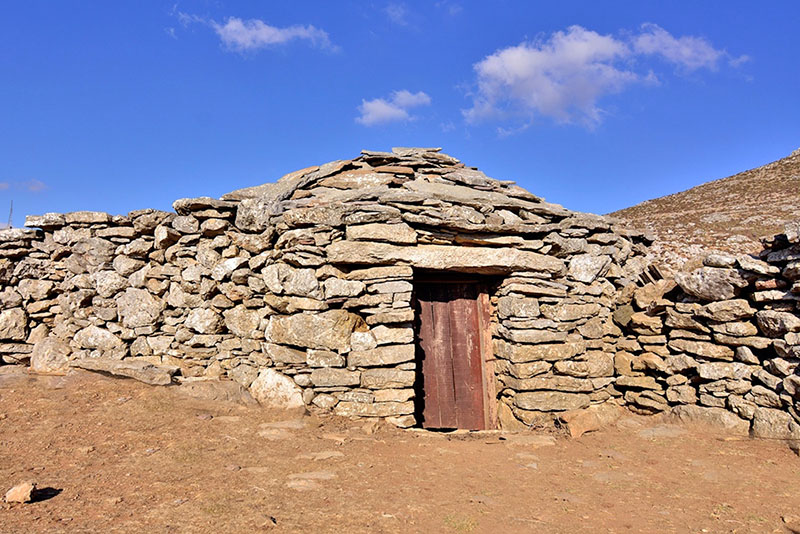Crete, the largest of the Greek islands, offers a diverse tapestry of landscapes, from its rugged mountains to its fertile plains. Among these varied environments, the life of a Cretan shepherd stands out as a unique and enduring tradition. Rooted in centuries-old practices, the shepherd’s way of life provides a window into the island’s rich cultural heritage and its deep connection to the land. For travelers seeking an authentic experience, immersing themselves in Cretan shepherd life is both an adventure and an education, offering insights into traditional practices, local cuisine, and the rhythms of rural life.
The Historical Context of Shepherding in Crete
Shepherding in Crete has ancient origins, dating back to the Minoan civilization around 3500 BCE. The island’s terrain, with its high mountains and extensive grazing lands, has always been ideal for raising sheep and goats. Historically, Cretan shepherds have played a crucial role in the island’s economy and culture, contributing to its renowned dairy products, particularly cheese. The most famous of these is graviera, a hard cheese made from sheep’s milk, often enjoyed with honey or as a staple in various dishes.
The life of a Cretan shepherd has traditionally been one of hard work and resilience. Shepherds traverse rugged landscapes, guiding their flocks to the best grazing spots, often spending long periods in isolated mountain huts known as mitata. These huts are typically simple stone structures, offering basic shelter and a place to produce cheese. The shepherd’s day starts early, involving milking, feeding, and caring for the animals, followed by cheese-making and other tasks.
Modern-Day Shepherding
While modern technology has introduced some changes, the essence of shepherd life in Crete remains deeply traditional. Today, many shepherds still adhere to age-old practices, balancing modern conveniences with a respect for their heritage. They continue to value sustainability, using rotational grazing to preserve the land and relying on natural resources.
For visitors, experiencing this way of life offers a unique perspective. Several programs and tours allow tourists to join shepherds in their daily routines, providing an immersive experience that highlights the skills and knowledge passed down through generations.
Immersive Shepherd Experiences
- Shepherd for a Day Tours
One of the most popular ways to experience shepherd life in Crete is through “Shepherd for a Day” tours. These tours typically begin with an early morning meeting with a local shepherd. Participants follow the shepherd and his flock through the mountains, learning to guide the animals and understand their behaviors. The experience often includes hands-on activities such as milking sheep, shearing wool, and assisting in cheese-making.
A highlight of these tours is the opportunity to visit a mitato, where the shepherd demonstrates traditional cheese-making techniques. Visitors can watch the entire process, from curdling the milk to forming and aging the cheese. These tours provide a comprehensive introduction to the skills and patience required in shepherding.
- Farm Stays
For those seeking a deeper immersion, farm stays offer an extended experience. Staying on a working farm allows visitors to engage in daily chores and learn about the seasonal rhythms of shepherd life. Guests participate in activities such as feeding the animals, maintaining pastures, and even assisting in the birthing of lambs during the spring.
Farm stays often include communal meals, where visitors enjoy dishes prepared with fresh, local ingredients. These meals are a highlight, featuring traditional Cretan cuisine such as lamb with wild herbs, fresh salads with goat cheese, and homemade bread. Sharing meals with the shepherd’s family provides an intimate glimpse into the social and cultural aspects of rural life.
The Culinary Connection
A significant aspect of experiencing shepherd life is the connection to Cretan cuisine. Shepherds have traditionally been self-sufficient, producing their own food from what the land provides. This includes a variety of dairy products, meats, and seasonal vegetables.
- Cheese-Making Workshops
Many tours and farm stays offer cheese-making workshops, where visitors can learn to make graviera, mizithra (a soft, whey cheese), and other traditional cheeses. These workshops emphasize the importance of quality ingredients and the techniques that have been refined over centuries.
- Cooking Classes
Cooking classes often complement the shepherd experience, teaching visitors how to prepare traditional dishes using fresh, local produce. These classes highlight the simplicity and richness of Cretan cuisine, focusing on ingredients such as olive oil, herbs, and locally sourced meats.
Cultural Insights
Experiencing shepherd life in Crete also provides valuable cultural insights. Shepherds have a deep connection to the island’s traditions, often participating in local festivals and religious celebrations. These events, which may include music, dancing, and feasting, offer visitors a chance to witness and partake in the vibrant cultural life of rural Crete.
Conclusion
Immersing oneself in the life of a Cretan shepherd is a journey into the heart of Crete’s cultural and natural heritage. It is an experience that goes beyond mere observation, inviting participants to engage with the land, the animals, and the traditions that define this way of life. Through hands-on activities, culinary delights, and cultural exchanges, visitors gain a profound appreciation for the resilience, skill, and wisdom of Cretan shepherds. This experience not only enriches one’s understanding of Crete but also offers lasting memories of a simpler, more connected way of life.


